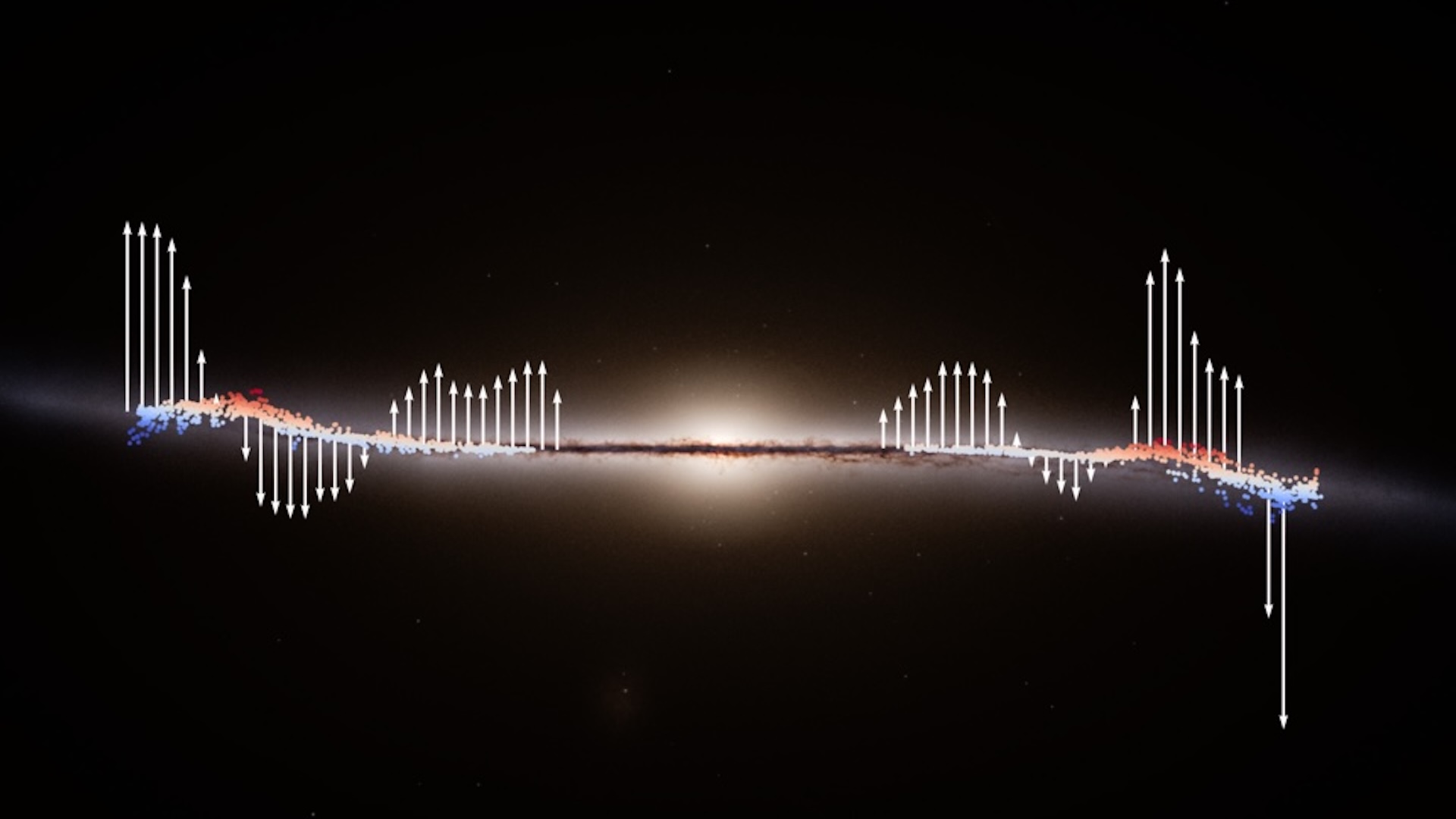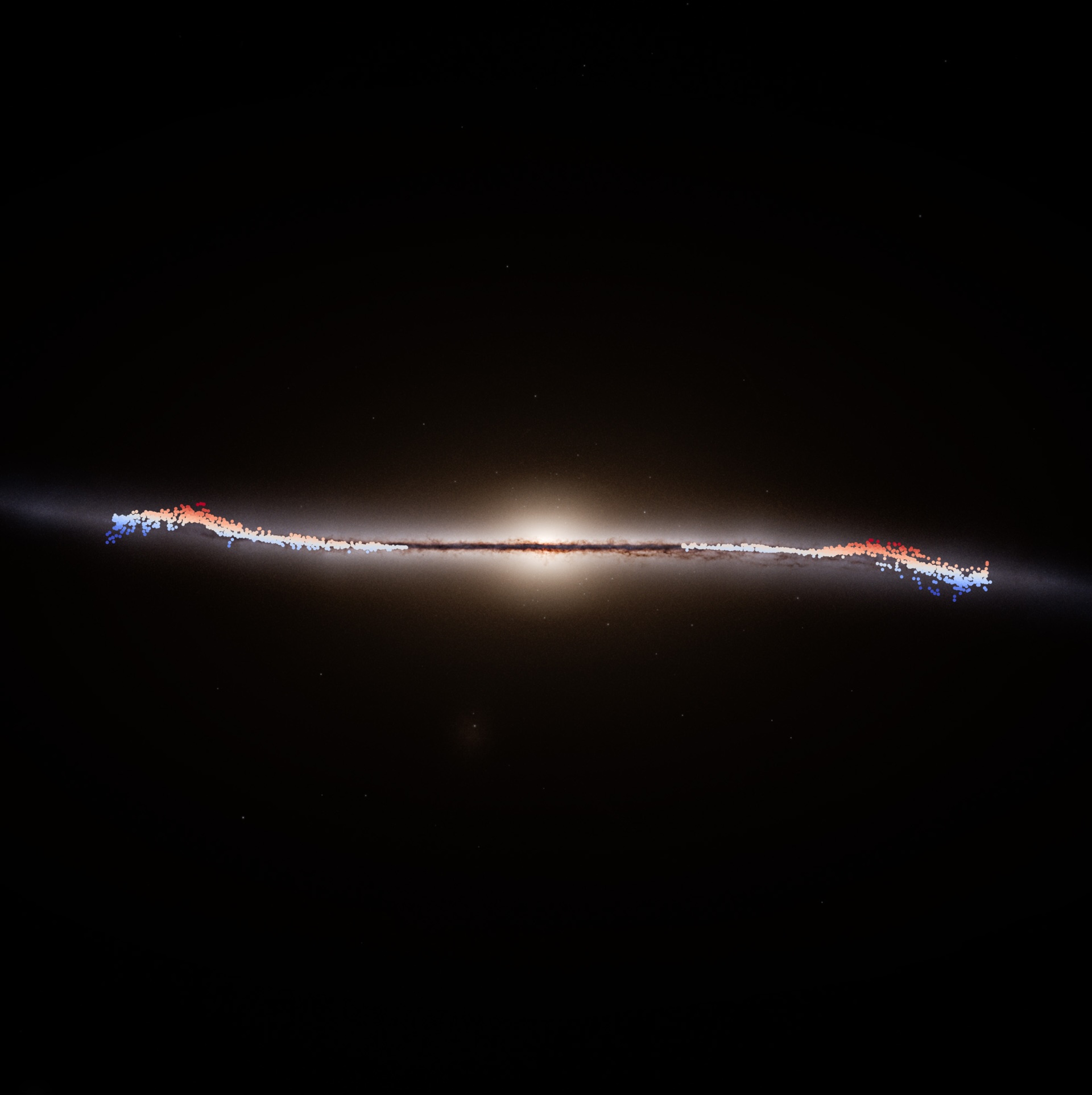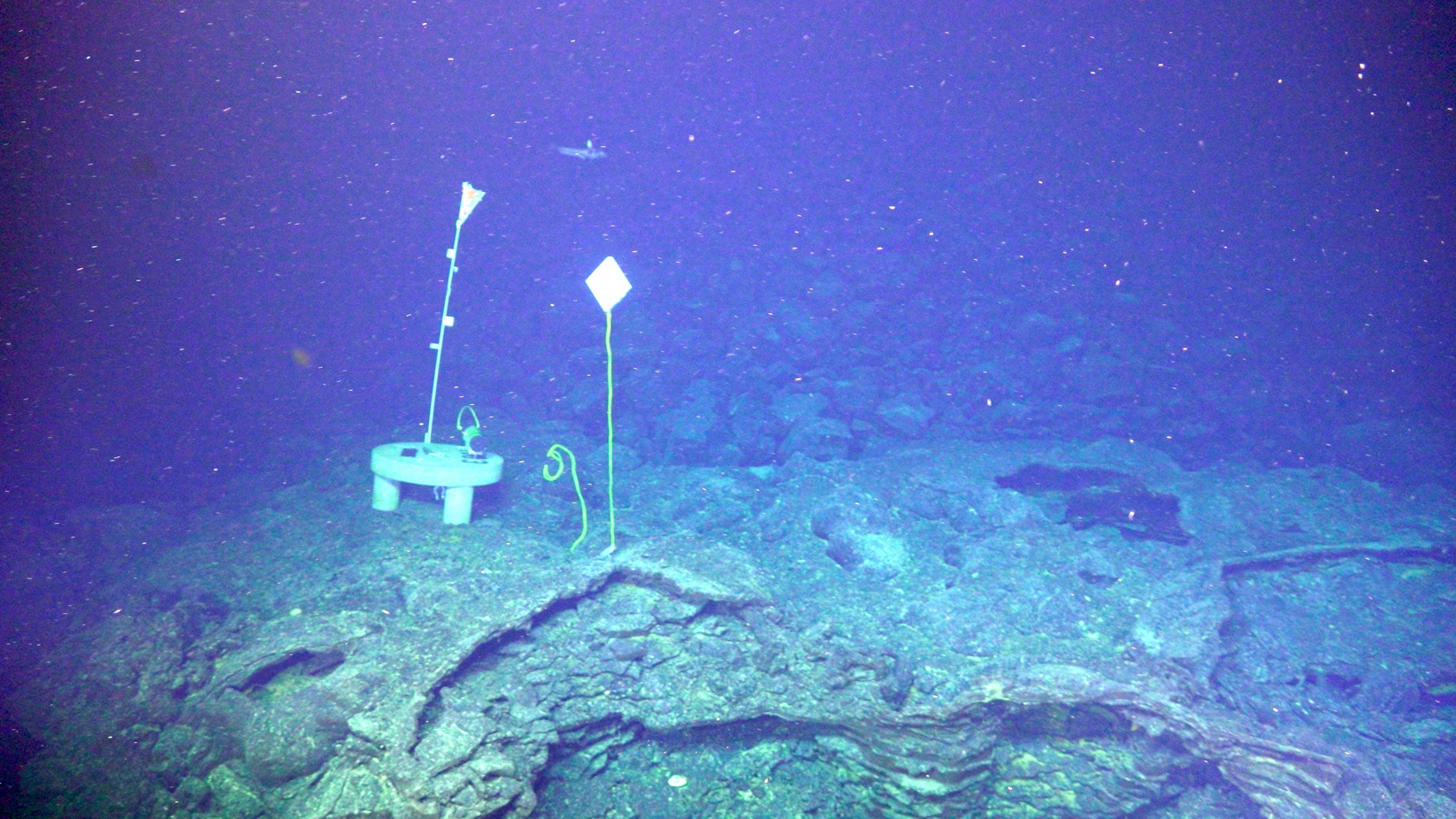A 'Great Wave' is rippling through our galaxy, pushing thousands of stars out of place
A giant 'wave' is rippling through the Milky Way, pushing thousands of stars across the galaxy, and scientists don't know what triggered it.

A huge "wave" is rippling through our galaxy, pushing billions of stars in its wake, a new study reveals.
The Milky Way's galactic wave was spotted in mapping data from the European Space Agency's (ESA) Gaia space telescope, which charted the positions and movement patterns of millions of stars with high accuracy before retiring earlier this year.
Like ripples in a pond, the wave has a very large influence: It affects stars between 30,000 and 65,000 light-years away from the galaxy's center, ESA officials said in a statement. That's a large percentage of the Milky Way, which is roughly 100,000 light-years across.
Astronomers still don't know what started the motion. It could have been a past collision with a smaller, dwarf galaxy that caused the large shake, ESA officials said, but more investigation is required to answer that question.
The results were published July 14 in the journal Astronomy & Astrophysics.
Mapping the wave
Gaia mapped the speeds and motions of stars for nearly a dozen years. In 2020, the telescope observed that the disk of the Milky Way wobbles like a spinning top. The newfound wave was charted by following the movements and positions of young, giant stars as well as a set of Cepheids — stars that have predictable-but-variable brightness.
"Because young giant stars and Cepheids move with the wave, the scientists think that gas in the disc might also be taking part in this large-scale ripple," ESA officials wrote in the statement. "It is possible that young stars retain the memory of the wave information from the gas itself, from which they were born."
Get the world’s most fascinating discoveries delivered straight to your inbox.
ESA officials likened the galactic wave to "the Wave" done by a crowd at a stadium: In a group movement starting from one side of the stadium and moving section by section to the other side, individuals rise from their seats, fully stand up with their arms extended, and then sit back down.

A similar type of wave motion is visible when our galaxy is observed edge-on. Such vertical motions, represented by arrows, show ripples of movement far across the Milky Way's disk.
"This observed behaviour is consistent with what we would expect from a wave," lead author Eloisa Poggio, an astronomer at the National Institute of Astrophysics in Italy, said in the statement.
The newly discovered wave could also be related to a much smaller Milky Way ripple already known by scientists. Called the Radcliffe Wave, it is visible about 500 light-years from the sun and stretches for 9,000 light-years across space.
"However, the Radcliffe Wave is a much smaller filament, and located in a different portion of the galaxy's disc compared to the wave studied in our work," Poggio said. "The two waves may or may not be related. That's why we would like to do more research."

Elizabeth Howell was staff reporter at Space.com between 2022 and 2024 and a regular contributor to Live Science and Space.com between 2012 and 2022. Elizabeth's reporting includes multiple exclusives with the White House, speaking several times with the International Space Station, witnessing five human spaceflight launches on two continents, flying parabolic, working inside a spacesuit, and participating in a simulated Mars mission. Her latest book, "Why Am I Taller?" (ECW Press, 2022) is co-written with astronaut Dave Williams.
You must confirm your public display name before commenting
Please logout and then login again, you will then be prompted to enter your display name.
